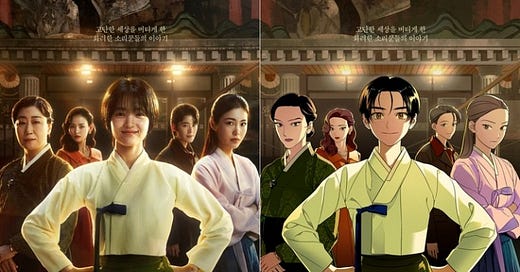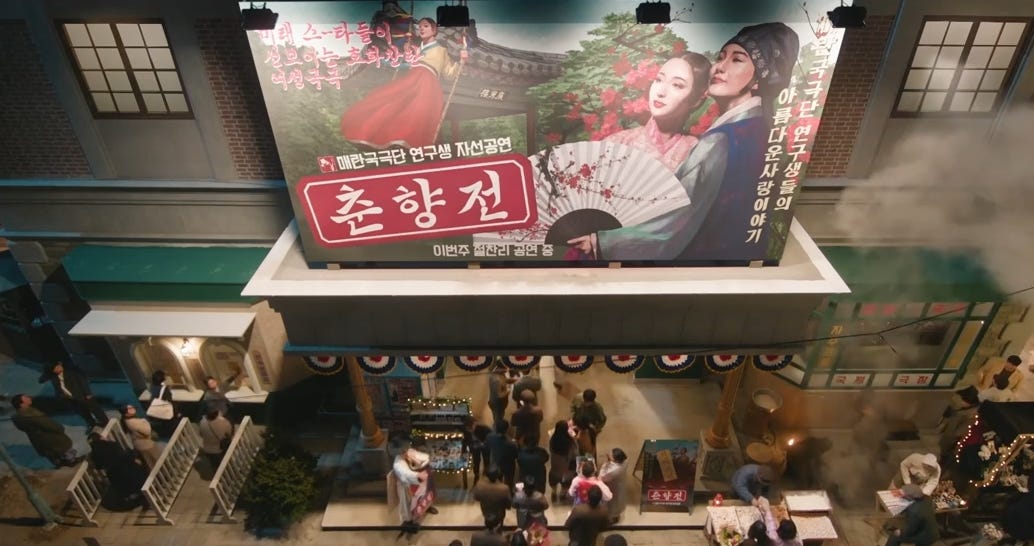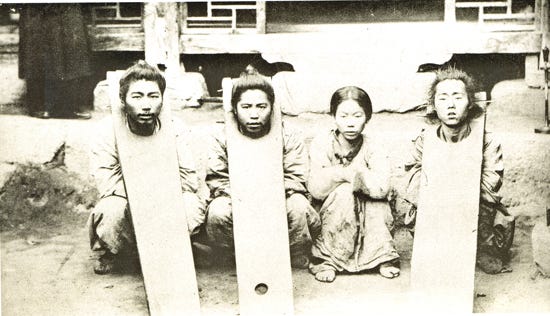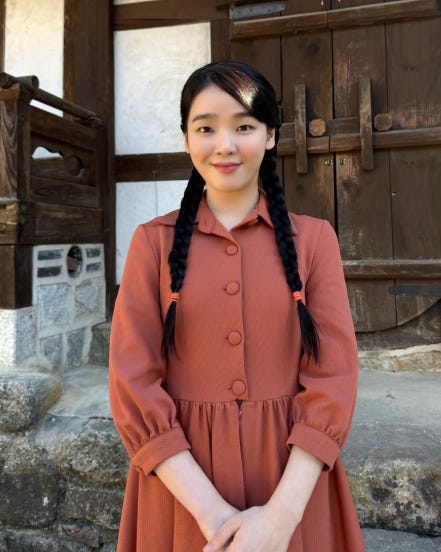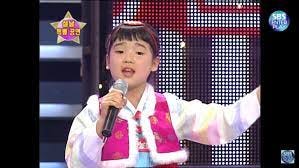Before You Watch the K-drama 정년이(Jeongnyeon: The Star is Born)
Well, the winter break was with us for the past 3 weeks and the kids came home from college. Even the one that goes to UCLA lives away from home in a school apartment near the campus. Needless to say, I was an excited dad to see all of them together in the house again.
One of the things that we used to do together when the kids were younger was watch TV in our bedroom—Korean comedy/variety shows, stuff on YouTube, Disney and Nickelodeon cartoons (SpongeBob and Gravity Falls come to mind). But there’s not a lot to watch these days. We were all bored one night so we decided to give K-drama a shot—we rarely watch them.
We settled on 정년이1 because I had heard good things about it and that it’s not like the other run-of-the-mill K-dramas. Its English title is Jeongnyeon: The Star is Born and had very high ratings on IMDb.com.
I understand that it’s an adaptation of a popular webtoon that had a cult-like following, especially from the feminist and lesbianism standpoint. I’ve also heard that the TV drama was criticized from the original webtoon fans for omitting a lot of the queer aspect of the content (please forgive me if I used inappropriate terms). The TV producers probably didn’t have a choice.
Anyway, we binge-watched and finished the 12-episode drama in about 4~5 days. That almost never happens in the Chang household (the only other one SKY Castle)—says something about how much we liked it (or how there was nothing else to watch). The title character actress Kim Tae-ri (김태리) carried the show but my youngest and I liked the older sister character the most.
For you K-drama fans—I know some of you are hardcore and some are casual—the overall plot might be simple enough, but the nuanced content isn’t the easiest thing to grasp especially because a lot of the dialogue is in old(er) Korean and the protagonist Jeongnyeon speaks in a very distinct and heavy southern Jeolla accent. I would have had a hell of a time translating it into English.
But the biggest issue for the translator would not be the dialogue itself, I think. It would be the on-stage performance of the four separate stories, or “Korean operas,” if you will. Imagine watching a BBC drama as a non-English speaker about operas that are based on the lives of little-known British historical figures, and the dialogue and lyrics for the aria are in old English. That’s quite a problem.
So, with that long-winded introduction, I’ll provide the background for Jeongnyeon by summarizing three separate stories (the fourth one next week because it deserves its own post) that are featured on the stage. Even if you don’t watch K-drama, these are stories/legends that you want to know about anyway.
춘향전 (The Story of Choon-hyang)
Of the four stories that are featured in the drama, this is the only one that is pure fiction, probably the most popular one that originates from the Joseon period. It is a written novel by an unknown author, most likely sometime in the 18th century and the plot was made into pansori, a “solo opera.” The story goes…
Choon-hyang (춘향) is the daughter of a retired ki-saeng (기생, lowborn class, same level as nobi, entertainer at private clubs of the day) living in a southern city called Namwon (남원). The main male character Yi Mong-ryong (이몽룡), the son of the local magistrate, falls in love with Choon-hyang. Despite their class difference, they vouch for marriage.
Mong-ryong has a personal servant named Bang-ja (방자) and Choon-hyang’s servant’s name was Hyang-dan (향단), both of whom are what’s called gwan-no (관노, public service nobi owned by the local magistrates). Bang-ja and Hyang-dan have a thing going on between them also and they play prominent roles in the story, for they act as conduits for communication between Mong-ryong and Choon-hyang.
Mong-ryong moves back to Hanyang (Seoul) when his dad’s term is over (Bang-ja stays in Namwon because he’s owned by the magistrate), and the new magistrate (사또, sah-toh) Byon is an abusive and corrupt jerk. Byon asks Choon-hyang for “service”, but she refuses (due to the fact she argues that she’s married, although not formally) and is jailed.
Choon-hyang is suffering and Mong-ryong after some time finally wanders into Namwon looking like a homeless person. Bang-ja sees him and scolds him.2 But, unbeknownst to Bang-ja and everyone else, Mong-ryong is King’s secret agent3 in disguise4, having passed the National Civil Service Exam at the top of his class, traveling the country and striking down on the wicked officials.

On Byon’s birthday where he’s having a big feast on the grounds of the magistrate complex, Mong-ryong shows up in dirty clothes and is being derided by everyone. He sees that the city of Namwon is in bad hands—local officials corrupt and people suffering, and in particular Choon-hyang bound in a wooden neck collar called a kahl (칼).5 Choon-hyang doesn’t see him.
Mong-ryong’s seen enough and he orders his brigade of soldiers in disguise to appear and arrest Byon and his cronies. Mong-ryong sits at Byon’s chair and is coy—hides his face behind a big fan, asks Choon-hyang to give him “service.” She remains faithful and refuses, saying that she’s married. Mong-ryong finally reveals his identity to her and they live happily ever after.
The drama, particularly episode 3, will make a lot more sense if you knew this story going in.
자명고 (Jah-myong-go)
Jah-myong-go literally means a “big drum that beats itself.” I think there was another history-based K-drama of the same name. If you google the story of 자명고, it will tell you that it’s a folklore but is based on real history.
Almost exactly 2000 years ago, the third King of Goguryeo (고구려) dynasty had a son named Prince Hodong (호동왕자). In a neighboring city-state called Nak-rang (낙랑)6, there was a princess7 who fell in love with Hodong.
The politics of the day dictated that Goguryeo was eyeing to destroy Nak-rang and absorb its land and people but was worried about the purported “self-beating drum” that Nak-rang had in possession. That took away the element of surprise attack to gain upper hand in the upcoming and unavoidable war.
Prince Hodong of Goguryeo, despite his love for the Princess of Nak-rang, convinces the Princess to destroy the 자명고. Nak-rang is destroyed, and its King, Choi Ri (최리), kills his own daughter, the princess. Prince Hodong supposedly commits suicide soon after. All this takes place in the year 32 CE.
** side note: the characters of Gomigul (고미걸) and Goosul-aghi (구슬아기) do not appear in the original text of the Prince Hodong and Princess Nakrang. Also, you can’t help but compare the story to that of Romeo and Juliet, which has been often discussed. Did Shakespeare plagiarize? Hmm… (tongue in cheek)
바보온달 & 평강공주 (The Idiot On-dal and Princess Pyeong-gang)
Again, in Goguryeo but about 500 years after the Jah-myong-go times. The 25th King of Goguryeo, Pyeong-won (평원왕) had a daughter and history texts call her Princess Pyeong-gang, but that’s not her real name, which is unknown. Pyeong-gang is another name for King Pyeong-won.
The princess was a big crier since she was a baby, and the King teased her all throughout her childhood by saying, when you grow up, I’m going to make you marry the village idiot On-dal.
On-dal was called a 바보 (ba-bo, idiot, imbecile) because he was dirt poor, dressed in rags, and would always simper instead of getting mad whenever kids would make fun of him. As for his actual intelligence, there is no mention of it.
When the time came for the princess to marry, she stubbornly insisted that she will indeed marry On-dal, despite her dad’s anger. Even On-dal tried to dissuade the princess but to no avail. The princess sold her valuables and bought a house, land, and horses for On-dal to look after. She taught him how to read and write, horseback riding, and military skills.
In late 6th century, Goguryeo was invaded by neighboring Northern Zhou and On-dal single-handedly fended off the attackers and the King, the princess’s previously unapproving father, bestowed an official title to his son-in-law and accepted him as a part of the family.
A few years later, Shilla dynasty down south invaded Goguryeo’s territory (thought to be around today’s Seoul area). On-dal, now a general, proclaimed, I will not return until I destroy the Shilla forces and set off to the battlefield. But during battle, he sustained a fatal injury and died soon after. When the Goguryeo soldiers try to lift his coffin, it would not move an inch. But when the princess came and whispered to her dead husband, The matters of life and death have been decided. Let’s now go home, the soldiers were finally able to lift and move the coffin and have a proper funeral.
All the singing scenes were dubbed by real (chang) singers. I’ve read that the music and singing were recorded prior to the filming and the actresses prepared for the lip-syncing and choreography for 7 months.
Of special note on this matter is the role of Cho-rok (초록) played by Hyun Seung-hee (현승희), a member of the K-pop idol girl group Oh My Girl.
She was a real child prodigy in traditional Korean singing known as 창 (chang), and was featured on many Korean talent shows on TV when she was around 10 years old. She was the only cast member who didn’t have to lip-sync.
Hope this helps.
The “이” at the end of anyone’s name doesn’t mean anything. I’m sure there’s a term for it in Korean grammar somewhere. The rule is, you add the “이” at the end of a Korean name to refer to that person if that person’s name’s second character (or, the “middle name”) has what we call “받침” or the ending consonant. I know this is confusing—this is something uniquely Korean and has no English equivalent. For example, my name written in Korean is 영익. That last “ㄱ” is called “받침, baht-chim” and since I have that, people would refer to me as 영익이. My wife’s name 유미, on the other hand, doesn’t have that last consonant—it ends in a vowel “ㅣ”, so you do NOT add that “이” at the end of her name. So, in English title, they didn’t add the “i” at the end because that that “i” doesn’t have a place in the English language. The main character’s name is 윤정년, Yoon Jeong-nyeon.
One of the main reasons why this novel was so popular among the common people during the late stages of Joseon period. It has the elements of lowborn class being defiant to the noble class.
called 암행어사. Later, this is the highlight of the entire storyline, when Mong-ryong’s assistant yells out “암행어사 출두요!” meaning, “The King’s secret agent is here!” at Byon’s birthday feast.
This is the part that’s played out on the stage in the drama. If you don’t know the story of Choon-hyang, that scene in Jeongnyeon will make little sense.
Obviously different from “knife” that’s written in the same way, 칼.
Sometimes you will see “Nang-nang,” which is how it’s pronounced. In the early part of the Three Kingdoms Period that started roughly around the 1st century BCE, it is thought that there were more than 300 of these small city-states in and around the Korean peninsula and today’s Manchuria region which Goguryeo controlled for over 500 years.
In Korean history textbooks, she’s usually referred to as 낙랑공주 = Princess of Nak-rang. Her real name is not known.

